An over-powered motor usually causes a large wake. This is especially true if the boat is a small powerboat and the motor is for a larger powerboat.
You’re on the water, enjoying a nice day of boating. Then, suddenly, you see a large wake rising from the water. What’s going on here? Unfortunately, this is a common problem for boaters, and it’s important to know what you can do to avoid this situation.
We shall discuss the problems of massive wakes and how to avoid them in this article. In addition, we’ll discuss some of the issues that wakeboarding poses to boat owners and how to avoid them.
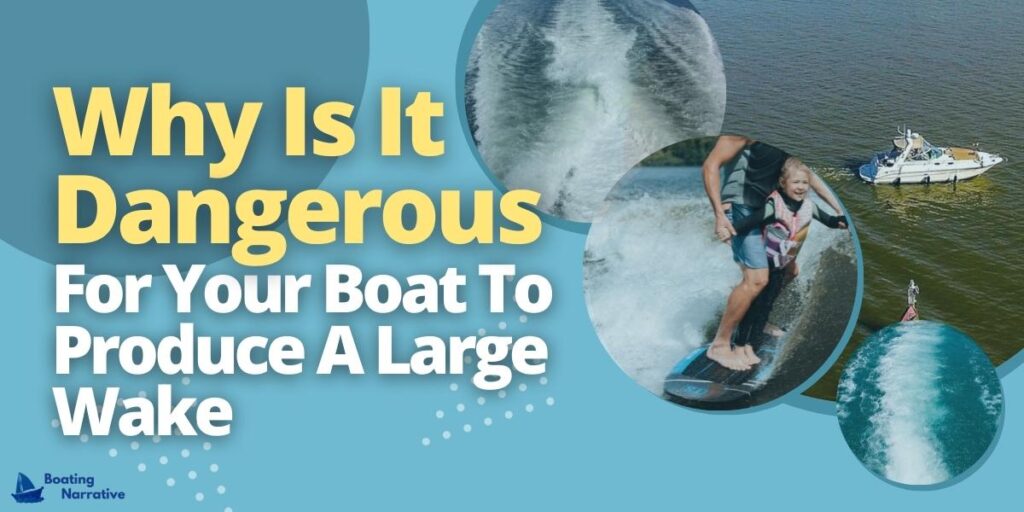
Here’s The Answer To Why it’s Dangerous for Your Boat To Produce A Large Wake:
Large wakes can be dangerous to other boats, swimmers, divers, and surfers. They can cause poor visibility and cause boats to capsize. In addition, larger wakes can damage piers and shorelines.
Large wakes can be extremely dangerous to boat operators and passengers, especially when unexpected. Wakes can cause a boat to capsize or flip, putting everyone on board at serious risk.
Why is it Dangerous to Have a Large Wake?
It is dangerous for your boat to produce a large wake.
- When you are in a wake zone, you must slow down to create a smaller wake.
- A boat’s wake can damage docks, piers, and other boats.
- Waves of significant size can create navigation hazards for other vessels, including skiers and personal watercraft.
- Large waves can damage wildlife habitats and shoreline property.
The Coast Guard has established rules and regulations to help prevent large waves and wakes. When boating in a wake zone, you must slow down to create a smaller wake. You may be subject to a civil penalty if your boat creates a large wake.
Responsible seamanship includes being aware of the wake your boat produces and taking steps to avoid creating a large wake. By following the Coast Guard’s rules and regulations, you can help keep our waterways safe and enjoyable for everyone.
Swamp Smaller Boats and Cause It to Capsize
It is dangerous for your boat to produce a large wake because it can swamp smaller boats and cause them to capsize. When a vessel’s wake washes over a kayak or canoe negligently, the larger boat can easily capsize the smaller one.
If this happens, it might result in significant injury or even death. A wake is the trail of water that a boat leaves behind it as it moves through the water. Another danger of large boat wakes is that they can cause distress to other vessels.
When a large boat travels at high speeds, the wake it produces can be large and dangerous. In some cases, the wake can even damage the hull of the smaller vessel.
Damage docks, piers, and waterfront property
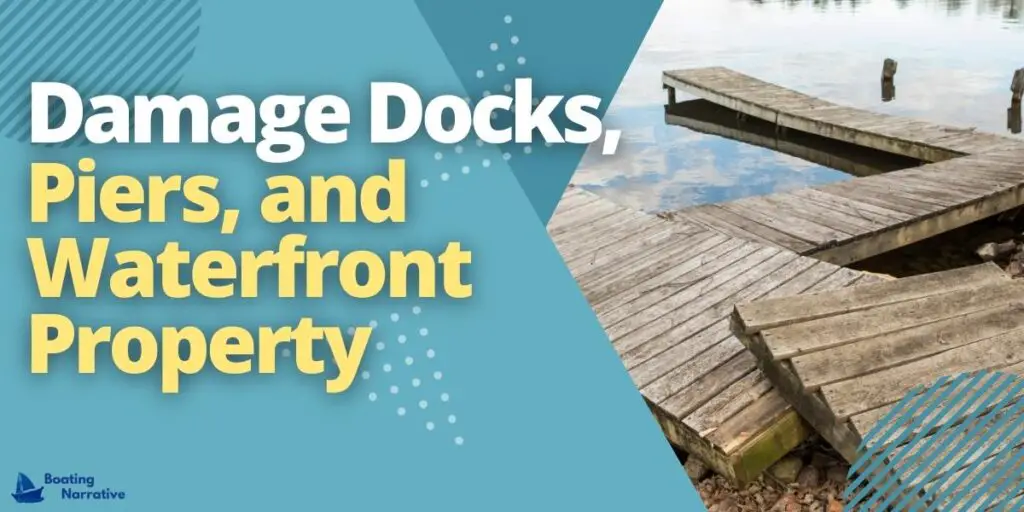
It is dangerous for your boat to produce a large wake for a few reasons. First, operating a powerboat, the wake can damage docks, piers, and waterfront property. This is personal property, and you could be held liable for the damages.
If you are in a marina, the wake can damage other boats. Larger boats can damage smaller boats and vice versa.
National maritime rules state that you must maintain an idle speed and throttle near docks, piers, and waterfront property. This is to ensure the safe operation of a vessel and protect a person’s property.
Injury to operators and passengers
It is dangerous for your boat to produce a large wake because it can injure the operators and passengers of other vessels and damage shallow waters, and disturb wildlife.
When operating a powerboat, it is the skipper’s responsibility to be aware of the wake’s size and weight and take measures to avoid causing damage or injury.
Jet skis, water skiers, and other recreational vessels are especially vulnerable to large waves. As a result, working near one requires particular caution.
As a general rule, steer clear of areas with a lot of other vessels if possible.
Can Injure Swimmers, Divers, and Surfers
According to the U.S. Coast Guard, large wakes can injure swimmers, divers, and surfers. There have been over 700 reported injuries from large wakes since 2016.
Wakes from large boats can travel at speeds of up to 30 mph.
It is dangerous for your boat to produce a large wake because it can injure swimmers, divers, and surfers. Therefore, when operating a powerboat, it is your responsibility to be alert and exercise good conduct.
You should avoid creating a large wake by maintaining a minimum and obeying speed limits. Also, remember always to operate your boat at a safe speed. Creating a large wake can result in a civil penalty.
The water sports industry association urges all boaters to take the following steps to avoid injuring swimmers, divers, and surfers:
- Operate your boat at a safe speed.
- Maintain a minimum wake.
- Obey all speed limits.
- Be alert and exercise good conduct.
Destroy Coral And Marine Wildlife Habitat
It is dangerous for your boat to produce a large wake because it can destroy coral and marine wildlife habitats. The hull design, the weight of the vessel, and the engine’s power are all factors in this.
When a boat goes through shallow water, its wake can damage or kill the coral. The coral is a type of marine life that is very important to the ecosystem. It provides a home for fish and other animals. It also helps to filter the water.
In open water, a large wake can also be dangerous. It can capsize smaller boats and damage larger ones. It can also create waves that can swamp a vessel.
The vessel’s weight also plays a role in how big the wake is. Heavier boats tend to produce larger wakes. The power of the engine is another factor. Boats with more horsepower tend to produce larger wakes.
Every one of these things can harm marine life and its natural habitats.
Soil Erosion
It is dangerous for your boat to produce a large wake for a few reasons:
- It can cause soil erosion.
- It can damage fragile shorelines.
- It can create a hazard for other boats and people in the water.
Soil erosion is a major problem in many areas of the country. For example, when a boat produces a large wake, it can cause the shoreline to erode. This can damage the natural environment and cost millions of dollars to fix.
Fragile shorelines are also at risk when a boat produces a large wake. These shorelines can be damaged by the wake and may not be able to recover. This can lead to serious problems for the environment and the local economy.
Large Wake Can Compromise Boat’s Stability
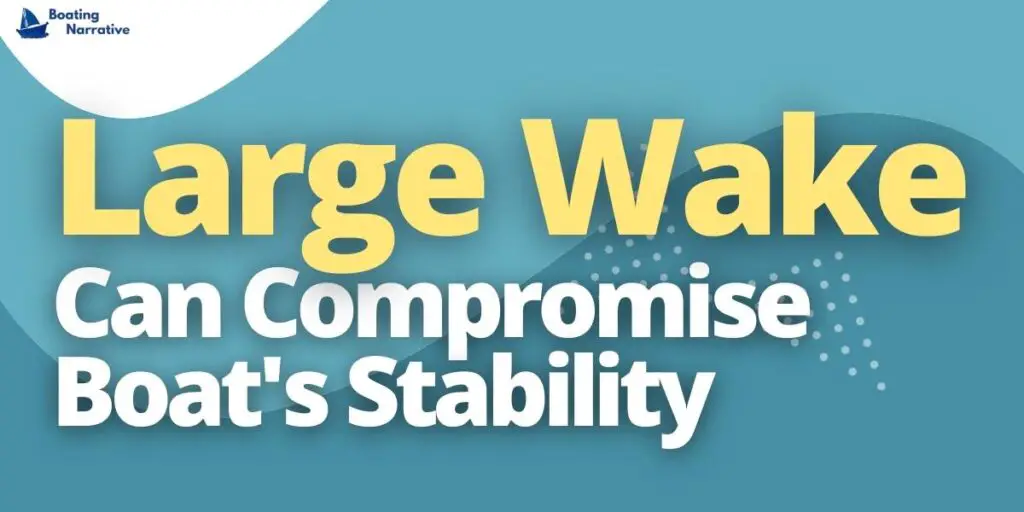
A large wake can compromise a boat’s stability for a few reasons. First, if the wake is large enough, it can cause the boat to heel or lean to one side. This can be dangerous because it can make the boat unstable and more likely to tip over.
- A large wake can also cause the boat to pitch or nose up and down.
- A large wake can also cause the boat to roll or turn from side to side.
Because the boat will be harder to handle and may potentially absorb water, this can be dangerous.
What Should Boat Owners Do if They See a Large Wake Heading Their Way?
According to the U.S. Coast Guard, boat owners should stay at least 100 feet away from oncoming large wakes.
Boat owners should be aware of the dangers of producing a large wake. A large wake can damage other boats, docks, and property. In addition, it puts other boaters in danger.
If a large wake is headed your way, there are a few things you may do to avoid it:
- Slow down and avoid creating a wake
- Stay aware of other boats and objects in the water
- Be prepared to take evasive action if necessary
Large Wake and Its Measurements
A large wake is defined as the waves created by a moving boat that can pose a danger to other boats and people in the water. Wake is measured by the height of the waves and the distance between the waves.
A large wake can be created by a boat traveling at high speed or by a poorly weighted boat. The average boat produces a wake about 2-3 feet high.
However, some boats can produce much larger wakes, sometimes up to 10 feet high. The size of the wake is determined by the size and weight of the boat and the speed at which it is traveling.
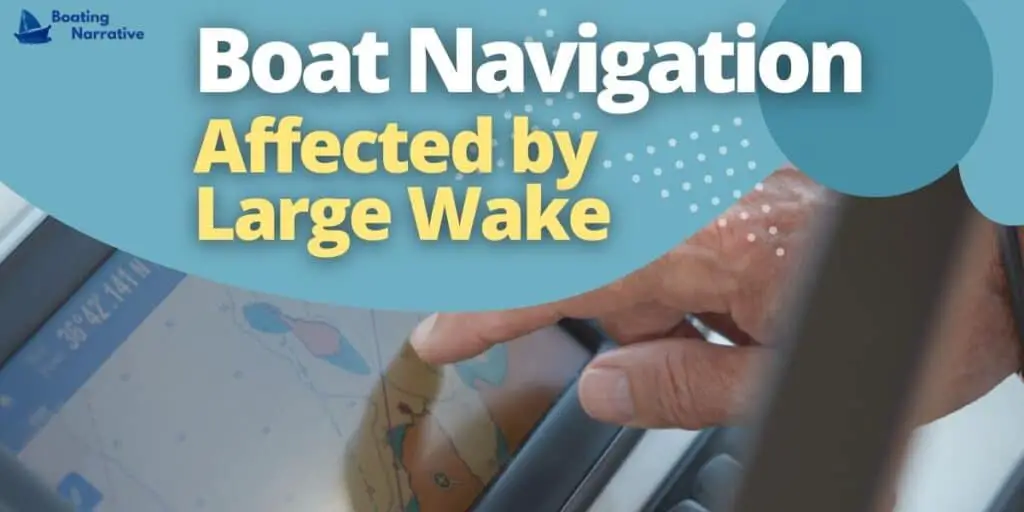
Boat operators can lose direction in water filled with a large wake, and they may also have difficulty sighting shoreline features.
Boat operators are also more likely to collide with other boats or objects when navigating in water that is filled with a large wake. When a boat creates a large wake, it can cause navigation problems for other boats in the area.
Can You Drown in The Wake of A Boat?
It is possible to drown in the large wake of a boat. The wake can push a person under the water and hold them there.
Wake from a boat can also capsize smaller vessels. Therefore, if you are on a small vessel, it is crucial to be aware of the wake from larger boats and stay clear of it.
Avoid Creating a Large Wake
There are a few things a boat operator can do to avoid creating a large wake.
- They can keep the speed of the boat down.
- They can make sure the boat is not overloaded.
- They can avoid sharp turns or have a slow speed when turning.
- They can be careful when operating near shore.
Wakes from boats can be a serious problem for shorelines. For these reasons, boat operators need to be aware of the potential problems they can cause and take steps to avoid them.
Boats That Don’t Cause Large Wakes
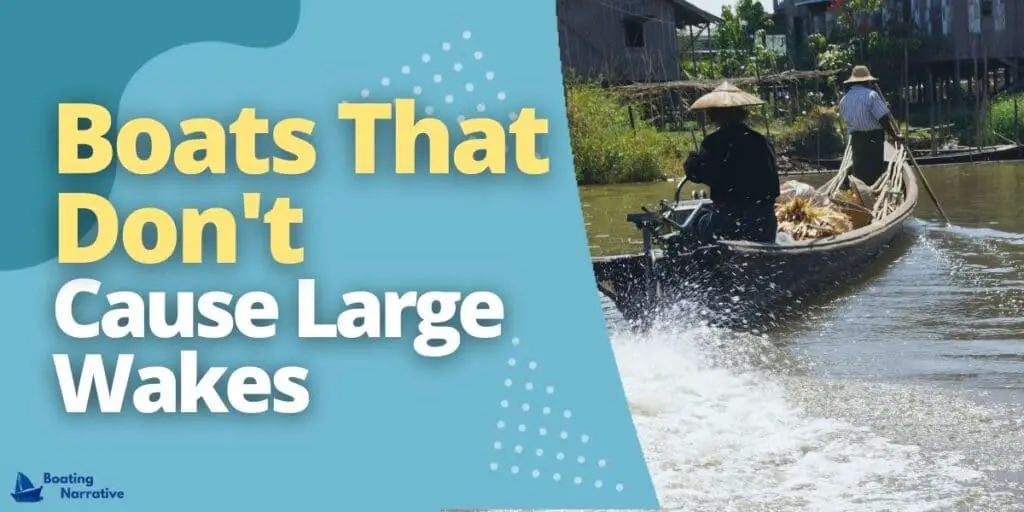
A few different types of boats don’t create large wakes. These include boats that are designed for wakeless cruising, such as electric boats and sailboats. In addition, some pontoon boats and certain types of fishing boats also don’t create large wakes.
Wakeless cruising boats are designed to move through the water with minimal disruption. Electric boats are powered by electric motors, which are much quieter than gas-powered engines.
If watercraft must maintain a low profile, they are suitable, such as in marinas or on lakes with strict no-wake zones. Sailboats are also very quiet, and their sails can be adjusted to produce a very little wake.
Pontoon boats are designed for leisurely cruising and typically don’t move very fast. This makes them much less likely to produce large wakes.
Fishing boats also tend to move slowly and produce relatively small wakes. Again, this is because they are often used in areas where large waves would be disruptive, such as in shallow waters or near docks and other boats.
Conclusion
Boating can be a lot of fun, but it can also be dangerous if you’re not careful. So when you’re cruising down the river or lake in your boat, make sure to stay within the designated boundaries and avoid producing a large wake.
This will keep other boats and waterfront property safe, but it will also prevent people from getting injured in the water. In addition, follow our tips on avoiding producing a large wake to make your boating experience even more enjoyable!

